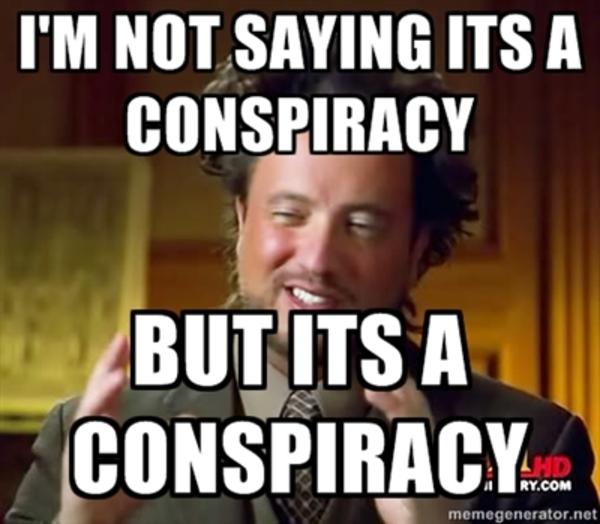Lovern sued Eagleridge Operating for injuries suffered in a gas line rupture. Eagleridge named Aruba Petroleum as a responsible third party; the Fifth Court found no abuse of discretion in striking that designation. The panel majority concluded that Aruba could not be liable based on the premises-liability analysis in Occidental Chemical v. Jenkins, 478 S.W.3d 640 (Tex. 2016). In re Eagleridge Operating, No. 05-19-01171-CV (Jan. 24, 2020) (mem. op.). A dissent reached a different conclusion, arguing that “[t]he majority opinion’s logic is flawed because it ignores the fact a person can simultaneously act in two different legal capacities that produce distinct legal rights and responsibilities.”
Monthly Archives: January 2020
The Fifth Court reversed the denials of several special appearances in a high-profile securities case, when the plaintiffs “explicitly allege that their causes of action under sections 11 and 12 are ‘based solely on negligence and/or strict liability,'” and thus had the burden to prove only the “adverse facts that existed at the time” of the relevant offerings and its effect on the underlying business. The Court concluded that the “operative facts” related to those particular issues “are not substantially connected to Texas.” 05-19-01177-CV (Jan. 26, 2020) (mem. op.) (applying, inter alia, Moncrief Oil v. Gazprom, 414 S.W.3d 142 (Tex. 2013)).
 On rehearing of Goldberg v. EMR (USA Holdings) Inc., the Fifth Court implemented the Texas Supreme Court’s December 2019 Creative Oil opinion and found that relevant communications did not adequately implicated issues of public concern to receive the TCPA’s protection: ‘The e-mails were communications because they were made by Defendants and submitted to the purchasers and suppliers. The communications were “made in connection with” “an issue related to . . . a good, product, or service in the marketplace,” scrap metal. However, all these communications were private communications between private parties about purely private economic matters. Therefore, these communications were not “made in connection with a matter of public concern” under the TCPA.’ No. 05-18-00261-CV (Jan. 23, 2020) (on motion for rehearing) (emphasis added). The Court reached a similar conclusion about other such business tort claims in Gehrke v. Merritt Hawkins & Assocs., LLC, No. 05-19-00026-CV (Jan. 17, 2020) (mem. op.)
On rehearing of Goldberg v. EMR (USA Holdings) Inc., the Fifth Court implemented the Texas Supreme Court’s December 2019 Creative Oil opinion and found that relevant communications did not adequately implicated issues of public concern to receive the TCPA’s protection: ‘The e-mails were communications because they were made by Defendants and submitted to the purchasers and suppliers. The communications were “made in connection with” “an issue related to . . . a good, product, or service in the marketplace,” scrap metal. However, all these communications were private communications between private parties about purely private economic matters. Therefore, these communications were not “made in connection with a matter of public concern” under the TCPA.’ No. 05-18-00261-CV (Jan. 23, 2020) (on motion for rehearing) (emphasis added). The Court reached a similar conclusion about other such business tort claims in Gehrke v. Merritt Hawkins & Assocs., LLC, No. 05-19-00026-CV (Jan. 17, 2020) (mem. op.)
 PandaLand sought mandamus relief from the trial court’s grant of a new trial based on application of the Craddock factors. While mandamus jurisdiction has expanded for some types of new-trial grant, the Fifth Court denied relief here, stating: “Mandamus review of a trial court’s order granting a new trial is limited to orders that are void or set aside a jury verdict.” In re Pandaland Holding (HK) Ltd., No. 05-19-01259-CV (Jan. 17, 2020) (mem. op.).
PandaLand sought mandamus relief from the trial court’s grant of a new trial based on application of the Craddock factors. While mandamus jurisdiction has expanded for some types of new-trial grant, the Fifth Court denied relief here, stating: “Mandamus review of a trial court’s order granting a new trial is limited to orders that are void or set aside a jury verdict.” In re Pandaland Holding (HK) Ltd., No. 05-19-01259-CV (Jan. 17, 2020) (mem. op.).
 In this election year, the State Bar’s Judicial Poll has special significance – if you have not voted yet and can’t locate the email from the Bar about it, just click here for your ballot by February 4.
In this election year, the State Bar’s Judicial Poll has special significance – if you have not voted yet and can’t locate the email from the Bar about it, just click here for your ballot by February 4.
“Extrinsic evidence not before the trial court at the time of the default judgment may be considered in a motion-for-new-trial or bill-of-review proceeding, but it cannot be considered in a restricted appeal. Accordingly, even though the attachments to appellants’ notice of appeal and the documents from the other case are papers on file in this appeal, they are extrinsic evidence that cannot be considered in determining whether there is error on the face of the record.” Convergence Aviation, Inc. v. Onala Aviation, LLC, No. 05-19-00067-CV (Jan. 2, 2020) (mem. op.) (citations omitted). This includes an affidavit about whether the defendant in fact had a Texas registered agent, making service on the Secretary of State inappropriate.
 Torres v. Lee offers three points to remember about deemed admissions:
Torres v. Lee offers three points to remember about deemed admissions:
- “Failure to obtain a ruling on the motion for leave to file late responses precludes complaint of the action of the trial court in deeming the requests for admission admitted” (citations omitted);
- A lack of good cause can be found when: “Upon receipt of the trial court’s order, Torres could have promptly filed a motion to withdraw admissions. Instead, he waited to file his motion to strike until the defendants filed their motion for summary judgment—over six months later and just two weeks before the scheduled trial date”;
- Undue prejudice can be found when: “Over six months later and just two weeks before the scheduled trial date, the defendants filed their motions for summary judgment based on the pleadings, Torres’s deemed admissions, and the trial court’s order with respect to the admissions. Defendants’ motions finally motivated Torres to file his motion to strike”
No. 05-18-00631-CV (Jan. 3, 2020) (mem. op.)
 “Appellants argue, with some logical force, that the ‘tolling’of limitations in a fraudulent concealment case involving silence by a physician and hospital does not end when the patient is discharged from the hospital or at the patient’s last visit to a physician, but instead ‘runs until the plaintiff discovers the fraud or reasonabl[y] could discover the fraud.’ This is so, they say, because limitations naturally runs from the date of last treatment, so fraudulent concealment estoppel provides no additional benefit to plaintiffs like them. Unfortunately, appellants cite no authority for that proposition and we have found none.When appellants’ relationships with Dr. Courtney and Baylor Frisco terminated, so did those health care providers’ duty to disclose. Thus, the statute of limitations as to Dr. Courtney and Baylor Frisco began to run at that time.” Tarrant v. Baylor Scott & White Med. Center-Frisco, No. 05-18-01129-CV (Jan. 15, 2020) (mem. op.) (emphasis added, citations omitted).
“Appellants argue, with some logical force, that the ‘tolling’of limitations in a fraudulent concealment case involving silence by a physician and hospital does not end when the patient is discharged from the hospital or at the patient’s last visit to a physician, but instead ‘runs until the plaintiff discovers the fraud or reasonabl[y] could discover the fraud.’ This is so, they say, because limitations naturally runs from the date of last treatment, so fraudulent concealment estoppel provides no additional benefit to plaintiffs like them. Unfortunately, appellants cite no authority for that proposition and we have found none.When appellants’ relationships with Dr. Courtney and Baylor Frisco terminated, so did those health care providers’ duty to disclose. Thus, the statute of limitations as to Dr. Courtney and Baylor Frisco began to run at that time.” Tarrant v. Baylor Scott & White Med. Center-Frisco, No. 05-18-01129-CV (Jan. 15, 2020) (mem. op.) (emphasis added, citations omitted).
 “[T]the county court issued the writ of possession on July 10, and Brenham vacated the Property on or about July 14. Brenham did not testify at trial that she abandoned the Property as a direct consequence of the triggering acts; however, she testified she vacated after the writ of possession issued:
“[T]the county court issued the writ of possession on July 10, and Brenham vacated the Property on or about July 14. Brenham did not testify at trial that she abandoned the Property as a direct consequence of the triggering acts; however, she testified she vacated after the writ of possession issued:
[Counsel]: And finally a writ of possession was issued, and you moved out of the premises?
[Brenham]: Yes.
. . . Viewing the evidence under the appropriate standard, we conclude there is no evidence Brenham abandoned the Property as a direct consequence of the triggering acts. Instead, the record establishes the opposite: that Brenham vacated only after being lawfully evicted.” Kemp v. Brenham, No. 05-18-01377-CV (Jan. 14, 2020) (mem. op.)
 “‘[M]andamus is governed largely by equitable principles, and“a petition for mandamus may be denied under the equitable doctrine of laches if the relator has failed to diligently pursue the relief sought,’ . . . ‘[E]quity aids the diligent and not those who slumber on their rights.’ However, laches does not apply when the order subject to the mandamus proceeding is void. To the extent [Petitioner]’s issues establish that the turnover order, and the subsequent clarification order, are void, mandamus is proper in this case.” Goin v. Crump, No. 05-18-00307-CV (Jan. 8, 2020) (mem. op.) (citations omitted, emphasis added).
“‘[M]andamus is governed largely by equitable principles, and“a petition for mandamus may be denied under the equitable doctrine of laches if the relator has failed to diligently pursue the relief sought,’ . . . ‘[E]quity aids the diligent and not those who slumber on their rights.’ However, laches does not apply when the order subject to the mandamus proceeding is void. To the extent [Petitioner]’s issues establish that the turnover order, and the subsequent clarification order, are void, mandamus is proper in this case.” Goin v. Crump, No. 05-18-00307-CV (Jan. 8, 2020) (mem. op.) (citations omitted, emphasis added).
 Tex. R. Civ. P. 301 says: “The judgment of the court shall conform to the pleadings, the nature of the case proved and the verdict, if any, and shall be so framed as to give the party all the relief to which he may be entitled either in law or equity.” Guillory v. Dietrich applied that rule, observing that “a judgment for money damages in excess of the amount pleaded cannot be supported,” and held: “Dietrich specifically pled that appellants had been unjustly enriched in the amount of ‘approximately $24,280.00’” representing Dottie’s share of federal income taxes that Dietrich paid. Although he pled for other damages as well, he did not plead unjust enrichment as a basis for recovering them. We conclude that the trial court erred by awarding Dietrich more than $24,280 as unjust enrichment damages.” No. 05-18-00504-CV (Jan. 6, 2020) (emphasis added).
Tex. R. Civ. P. 301 says: “The judgment of the court shall conform to the pleadings, the nature of the case proved and the verdict, if any, and shall be so framed as to give the party all the relief to which he may be entitled either in law or equity.” Guillory v. Dietrich applied that rule, observing that “a judgment for money damages in excess of the amount pleaded cannot be supported,” and held: “Dietrich specifically pled that appellants had been unjustly enriched in the amount of ‘approximately $24,280.00’” representing Dottie’s share of federal income taxes that Dietrich paid. Although he pled for other damages as well, he did not plead unjust enrichment as a basis for recovering them. We conclude that the trial court erred by awarding Dietrich more than $24,280 as unjust enrichment damages.” No. 05-18-00504-CV (Jan. 6, 2020) (emphasis added).
 The trial court required that a judgment debtor turn over certain “malpractice, Deceptive Trade Practices Act (DTPA), and Insurance Code claims to a receiver who is authorized to settle the claims and to pay the settlement proceeds to the judgment creditor in satisfaction of the underlying judgment.” The Fifth Court “conclude[d] that the turnover of each of the foregoing claims, with the exception of one c’laim asserted under the Insurance Code, is void because it is against public policy.” Goin v. Crump, No. 05-18-00307-CV (Jan. 8, 2020) (mem. op.)
The trial court required that a judgment debtor turn over certain “malpractice, Deceptive Trade Practices Act (DTPA), and Insurance Code claims to a receiver who is authorized to settle the claims and to pay the settlement proceeds to the judgment creditor in satisfaction of the underlying judgment.” The Fifth Court “conclude[d] that the turnover of each of the foregoing claims, with the exception of one c’laim asserted under the Insurance Code, is void because it is against public policy.” Goin v. Crump, No. 05-18-00307-CV (Jan. 8, 2020) (mem. op.)
 The unfortunate Mr. Cerullo had his home managed three times by storms. The resulting coverage litigation led to a dispute about allocation among insurers, as to which the Fifth Court held:
The unfortunate Mr. Cerullo had his home managed three times by storms. The resulting coverage litigation led to a dispute about allocation among insurers, as to which the Fifth Court held:
But because the Insurers wrongfully refused to defend Vines-Herrin [the builder] or participate in the arbitration, they lost their opportunities to require that Cerullo and Vines-Herrin allocate an exact amount of damages to the relevant policy period or to request that the arbitrator do so. At the arbitration, Cerullo’s burden was to prove and obtain damages for all of the problems at his home, regardless of the date of occurrence, and Vines-Herrin’s burden was to prove that its negligence was not the cause of any of the problems in question. Neither was required to meet the extra burden of proving exactly how much of the damage occurred on any particular day. Neither was required to establish any sort of allocation among the absent insurers, and the arbitrator was not asked to make one. Consequently, this case presents a problem similar to that of the time on the risk cases, that is, how to apportion an established total amount of damages among the insurers whose policies were in effect during the time a portion of the loss was suffered by the insured.
Great American Lloyds Ins. Co. v. Vines-Herrin Custom Homes, LLC, No. 05-18-00337-CV (Jan. 8, 2019) (emphasis added).
 Like Wile E. Coyote struggling to find Road Runner, attorneys and judges often wonder what level of detail is needed for findings of fact. The Fifth Court provided strongly-worded guidance in Guillory v. Dietrich:”Many fact findings in this case have no obvious relevance to any ultimate issue, such as finding 30 (“[Dietrich] was employed by Procter & Gamble for over 40 years.”). These additional findings concern evidentiary matters instead of controlling issues. As such they are unnecessary. . . . We disregard such findings in this opinion. Moreover, the unnecessary findings made our task in resolving this appeal, and presumably appellants’ task in briefing it, more difficult. A trial court should make findings as to only disputed facts significant to the case’s ultimate issues. Findings that a jury would be asked to make in a case may be an appropriate guide. Although we impose no consequences for the excessive findings in this case, excessive findings that obscure rather than clarify the judgment’s basis may lead to consequences such as remand for proper findings or sanctions.” No. 05-18-00504-CV (Jan. 6, 2020) (citation omitted).
Like Wile E. Coyote struggling to find Road Runner, attorneys and judges often wonder what level of detail is needed for findings of fact. The Fifth Court provided strongly-worded guidance in Guillory v. Dietrich:”Many fact findings in this case have no obvious relevance to any ultimate issue, such as finding 30 (“[Dietrich] was employed by Procter & Gamble for over 40 years.”). These additional findings concern evidentiary matters instead of controlling issues. As such they are unnecessary. . . . We disregard such findings in this opinion. Moreover, the unnecessary findings made our task in resolving this appeal, and presumably appellants’ task in briefing it, more difficult. A trial court should make findings as to only disputed facts significant to the case’s ultimate issues. Findings that a jury would be asked to make in a case may be an appropriate guide. Although we impose no consequences for the excessive findings in this case, excessive findings that obscure rather than clarify the judgment’s basis may lead to consequences such as remand for proper findings or sanctions.” No. 05-18-00504-CV (Jan. 6, 2020) (citation omitted).
In the Fifth District of Texas, the law is clear that a civil-conspiracy finding “remains a valid basis for joint and several liability even when [TCPRC] Chapter 33’s joint and several liability conditions are not satisfied.”  Guillory v. Dietrich, No. 05-18-00504-CV (Jan. 6, 2020), reinforced the Fifth Court’s prior holding on this point in LandAmerica Commonwealth Title Co. v. Wido, No. 05-14-00036-CV, 2015 WL 6545685 (Tex. App.–Dallas Oct. 29, 2015, no pet.) (mem. op.), noting the subsequent opinions in Agar Corp., Inc. v. Electro Circuits Int’l, LLC, 580 S.W.3d 136 (Tex. 2019), and Stephens v. Three Finger Black Shale P’ship, 580 S.W.3d 687 (Tex. App.–Eastland 2019, pet. filed)).
Guillory v. Dietrich, No. 05-18-00504-CV (Jan. 6, 2020), reinforced the Fifth Court’s prior holding on this point in LandAmerica Commonwealth Title Co. v. Wido, No. 05-14-00036-CV, 2015 WL 6545685 (Tex. App.–Dallas Oct. 29, 2015, no pet.) (mem. op.), noting the subsequent opinions in Agar Corp., Inc. v. Electro Circuits Int’l, LLC, 580 S.W.3d 136 (Tex. 2019), and Stephens v. Three Finger Black Shale P’ship, 580 S.W.3d 687 (Tex. App.–Eastland 2019, pet. filed)).
 Tex. R. Civ. P. 263 allows a trial on stipulated facts. “Parties may submit matters in controversy to the court upon an agreed statement of facts filed with the clerk, upon which judgment shall be rendered as in other cases; and such agreed statement signed and certified by the court to be correct and the judgment rendered thereon shall constitute the record of the cause.” Lavizadeh v. Moghadam reminds that “[i]n reviewing a judgment entered pursuant to stipulated facts, we disregard the court’s findings of fact and conclusions of law . . . we consider we consider only whether the trial court correctly applied the law to the agreed facts, utilizing a de novo review.” No. 05-18-00955-CV (Dec. 13, 2019) (mem. op.)
Tex. R. Civ. P. 263 allows a trial on stipulated facts. “Parties may submit matters in controversy to the court upon an agreed statement of facts filed with the clerk, upon which judgment shall be rendered as in other cases; and such agreed statement signed and certified by the court to be correct and the judgment rendered thereon shall constitute the record of the cause.” Lavizadeh v. Moghadam reminds that “[i]n reviewing a judgment entered pursuant to stipulated facts, we disregard the court’s findings of fact and conclusions of law . . . we consider we consider only whether the trial court correctly applied the law to the agreed facts, utilizing a de novo review.” No. 05-18-00955-CV (Dec. 13, 2019) (mem. op.)
 In re Andrew Jackson provides two reminders about the record support for a mandamus petition:
In re Andrew Jackson provides two reminders about the record support for a mandamus petition:
- Rule 52 statement. A petition seeking mandamus relief must contain a certification stating that the relator “has reviewed the petition and concluded that every factual statement in the petition is supported by competent evidence included in the appendix or record.” Tex. R. App. P. 52.3(j). Relator’s petition bears an inmate declaration stating relator does ‘verify and declare under penalty of perjury the foregoing statements are true and correct.’ Thus, relator’s certification does not comply with rule 52.3(j).”
- Record proveup. When submitting a sworn record in support of a mandamus petition: “The affidavit or unsworn declaration must affirmatively show it is based on the affiant’s personal knowledge. . . . [T]he affidavit or unsworn declaration must state the affiant has personal knowledge that the copies of the documents in the appendix are correct copies of the originals.” (applying In re Butler, 270 S.W.3d 757 (Tex. App.–Dallas 2008, orig. proceeding)).
No. 05-19-01428-CV (Dec. 18, 2019) (mem. op.).